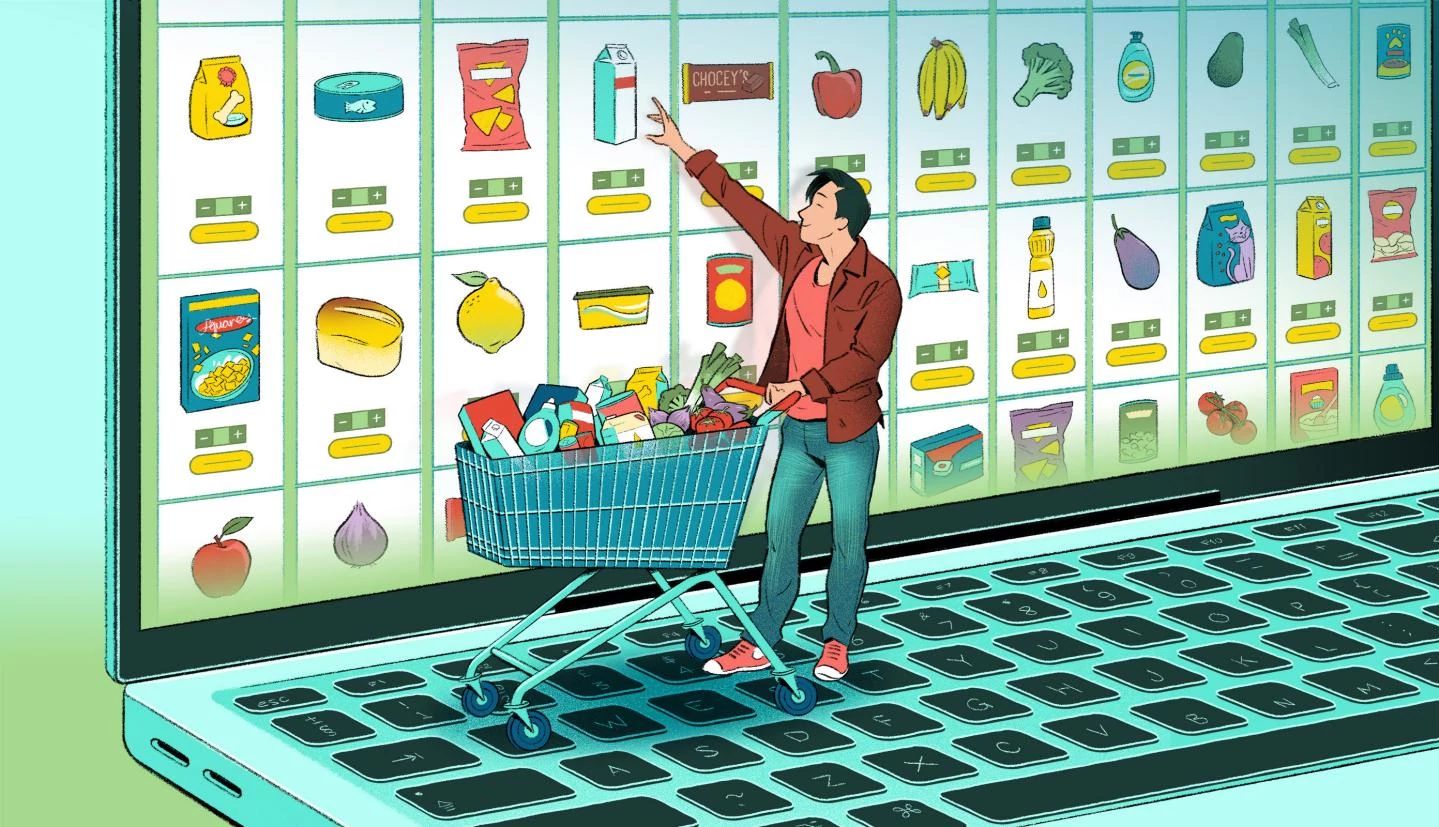AARP Hearing Center


Tired of schlepping to the supermarket? Sick of dealing with rude grocery shoppers? Fed up with waiting in long lines at checkout? It may be time to start buying groceries online.
You’d be in good company. In an April survey of U.S. consumers by Coresight Research, more than half of respondents ages 45 to 60 and nearly 2 in 5 adults over 60 said they had purchased groceries online in the previous 12 months.
“Older adults did not always shop for groceries online, but now more are doing it because it’s easier, safer and more convenient,” says Coresight analyst Sujeet Naik, who led the study. “They can order what they need anytime, without having to go out or worry about store hours. For seniors with health or mobility problems, this makes a big difference.”
Another benefit: “Home delivery also means they do not have to carry heavy bags, which is a big help,” Naik says.
Considering the conveniences, perhaps it’s no surprise that Americans had a record $3.9 billion of groceries delivered to their doorsteps in May, a 77 percent jump year over year, according to data from research firm Brick Meets Click.
But there’s a catch: Online grocery shoppers often encounter membership or delivery charges, markups on certain items and other fees. A little planning can help you select the online grocery service that’s right for you and cut costs.
1. Closely compare your options.
A number of supermarkets and retailers deliver groceries to customers, including Amazon Fresh, Whole Foods Market and Walmart. There are also third-party grocery delivery services like FreshDirect, Instacart and Shipt. DoorDash, Grubhub and Uber Eats deliver groceries too. However, your options may be limited depending on where you live, and fees can vary.
Most services charge either an annual fee for unlimited deliveries or a fee for each order. Many offer same-day delivery. Some offer exclusive discounts and coupons for those shopping online and let customers earn rewards for purchases.
Here is a summary of three of the most popular grocery delivery services.
2. Time your orders right.
Jim Wang, founder of personal finance resource WalletHacks.com, suggests placing online grocery orders in the middle of the week, when he says demand is typically lower and more products are available. “We never put in an order on the weekends,” he says. “We find too much stuff is out of stock.”
Wednesday is the best day for online orders, says Stephanie Carls, retail insights expert at coupon website RetailMeNot— that’s typically when grocery stores refresh their weekly sales and promotions.
Want same-day delivery? Place your order in the morning, since supermarkets typically restock shelves overnight.
3. Watch out for higher prices and hidden fees.
Sometimes, supermarkets and retailers charge online shoppers higher prices for certain products. For example, grocery prices on costco.com could be higher than at your local Costco warehouse. The same goes for some groceries sold on walmart.com.
And some grocery delivery apps charge an alcohol delivery fee for beer, wine or liquor; a service fee for long-distance deliveries or routes with tolls; or a convenience fee for orders delivered within hours.


































































More From AARP
11 Technology Changes Coming to Grocery Stores
From smart shopping carts to digital price tags, get ready for these supermarket innovations
15 Surprising Things About Supermarkets
Your local grocery store has some tricks up its sleeve
25 Ways To Cut Your Grocery Costs
Food prices are still elevated, but there’s ways to save